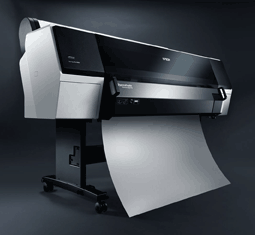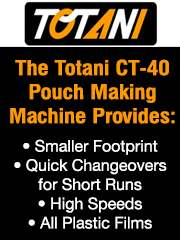Breaking Barriers
- Published: August 01, 2009, By By Edward Boyle, Contributing Editor
Inkjet presses account for just 1% of all press installations in the US, but at least 10% of all new press sales incorporate the obviously growing technology. “So, the upside is really quite large,” says Sean Skelly, director of marketing and service for EFI-Jetrion.
There are a number of reasons for the growth of this formerly “orphan” technology. Most significant is the convergence of the ever-growing demand for short-run printing and the ongoing improvements in inks, printheads, and image quality that inkjet can deliver. Says Skelly, “Those kinds of things have brought inkjet much closer to the mainstream than ever before.
“Demand is driving short-run printing,” he adds, noting the “explosion of SKUs,” even within particular product lines, has led to runs between 5,000 and 10,000 labels. “People want to do more promotional items, which tend toward short runs as inventories are cut down. They don't want to run a million labels if they don't have to.
“[HP] Indigo has done a very good job of trying to pry open the market and tell converters there is a short-run market out there,” he adds. Not only is there a market, he says, but one of the ways to serve that market is through ultraviolet (UV) inkjet.
Skelly says variable data printing can be considered a “short run of one. You're literally printing one label, then the next one is different, and the next one. There's no question that's something that cannot be done by analog printing at all. It's just not possible.”
Better Bar Codes
One of the most recent innovations in the inkjet industry has been the development of two-dimensional bar codes, which carry far greater amounts of information than traditional linear bar codes. First developed by Intermec Corp. in 1988, a 2-D bar code carries exponentially more information along both the height and width of the symbol. The uses of 2-D bar codes include direct and overnight mail, as well as in pharmaceutical applications in which space is at a premium, yet quality must be maintained.
“Converters are increasingly using bar codes as a way to communicate a message or brand awareness,” says John Kirschner, director of marketing-supplies for Videojet Technologies, “and in those cases, they expect the code to have a higher look and feel. For high quality cosmetics, the company wants the imaging on that package to be reflective of their brand image. So, we've stepped up the game in terms of dot placement accuracy, as well as [providing] additional fonts that come closer to creating higher quality images.”
Glenn Toole, VP, sales and marketing, of MCS Inc., notes 2-D bar codes allow end-users to “track and trace” a finished product from creation to sale. For example, the fresh food industry is “pushing” for the use of 2-D bar codes to track such things as blueberries, so a box can be traced as far back as the field in which the blueberries were grown. He says this is increasingly important due to recent food contamination scares, particularly among fruits and vegetables grown outside the US but sold here.
“It holds a lot more data; it's more compact; but it requires a higher resolution,” says Toole. “These are the type of things you're seeing now.”
He also points out the development of cameras verifying the accuracy of 2-D bar codes at full press speeds will promote greater acceptance by end-users who can benefit by their ability to carry vast quantities of information but demand proven accuracy. MCS has developed a camera, sold in conjunction with the printer, that can read and verify up to 100,000 images/hr and log them in a database that can be shared with the customer. Says Toole, “There's security that the process got completed.”
Kirschner says one of the first “breakthroughs in printing in years” from Videojet, which introduced the first inkjet printer in 1972, is a quick change cartridge that contains all the elements essential to printing quality 2-D bar codes and other inkjet end uses. Previously, components such as filters, printheads, and ink cartridges were maintained and replaced separately.
The Videojet 1000 line of continuous inkjet printers now can operate up to 18 months before preventive maintenance is required. Its modular design automates setup, calibration, and cleaning. In addition, the modular core can be serviced or changed in less than 30 minutes by an in-house technician. Kirschner says advances like this have made inkjet presses even more attractive to converters.
“We've made the maintenance interval very predictable; 9,000 hours or 18 months' worth of typical production,” says Kirschner. “Customers are in business to produce their product, not maintain equipment on their production line. We just further removed the inkjet printer as a source of potential unpredictable downtime.”
Software Solutions
Larry Kauffman, a product manager for Epson America, notes his company continues to develop ongoing innovations in both printheads and inks to enhance photographic printing technologies and proofing capabilities. Like all other areas of the converting industry, inkjet faces constant demand for faster press speeds and, at the same time, improved print quality.
Kauffman says Epson has been able to meet those goals by utilizing print production workflow and management information software developed by EFI, which also offers digital color print servers, superwide digital inkjet printers, UV and solvent inks, UV wide-format inkjet printers, and Jetrion industrial inkjet printing systems.

EFI's software was essential to the successful launch of Epson's Stylus Pro 7900 and 9900 lines of photo-quality printers late last year, as was the development of Epson's own UltraChrome HDR (High Dynamic Range) inks. They deliver its widest color gamut — up to ten colors — ever.
“We had great hardware, inks, and print media,” Kauffman explains, “but we needed a software solution for the printing industry that would give us the capabilities that commercial and package proofing customers need. The most difficult aspect of the whole market at this point isn't really about the hardware, it's about the software. So, we're working with the software community to try to improve ease of use.”
As for the future, Kauffman adds, “We're always looking for [greater] speed. People are using wider films, higher resolution files, more data. Ink development will remain important to future technologies as well. We're always looking at [print] media and opportunities for new substrates and what we can print on.”
Indeed, inkjet printers clearly have come a long way since the days of simple dot matrix. And with only a 1% market penetration, ongoing developments in speed and quality only add to their appeal. Although they may never replace or even rival flexo and other technologies as the process of choice in the thousands of converting operations across the country, they will likely become a fixture in many.
“Right now, inkjet presses are complementary devices to analog presses,” says Skelly. “But in the future there will be much more head-to-head competition because inkjet presses will be getting faster. The greater the throughput you can get with inkjet, whether through width or speed enhancements, the more competitive they are with analog presses.”
Contributing Editor Edward Boyle, based in Reading, PA, has covered the converting industry for more than 24 years. Contact him at EJB Communications; 610-670-4680; ejbcomm@aol.com.
Supplier Info
-
EFI Jetrion | www.efi.com
Circle 314 or visit www.freeproductinfo.net/pff -
Videojet Technologies Inc. | www.videojet.com
Circle 315 or visit www.freeproductinfo.net/pff -
MCS Inc. | www.mcspro.com
Circle 316 or visit www.freeproductinfo.net/pff -
Epson Inc. | www.epson.com
Circle 317 or visit www.freeproductinfo.net/pff
Garvey Group Adds UV Inkjet Printer
In January, The Garvey Group, Milwaukee, WI, became the first printer in the US to install Screen's Truepress Jet2500UV grand format UV inkjet printer. The Truepress can print 1,500 dpi at high speeds in full color plus opaque whites on substrates to 1.9-in. thick. It is compatible with applications ranging from point-of-purchase materials to posters, banners, and textiles. Dennis Muraro, GM, says “If you compare images printed on the Truepress Jet2500UV with images printed on other inkjet equipment, the Screen images look superior.”
-
Screen USA | www.screenusa.com
Circle 318 or visit www.freeproductinfo.net/pff













